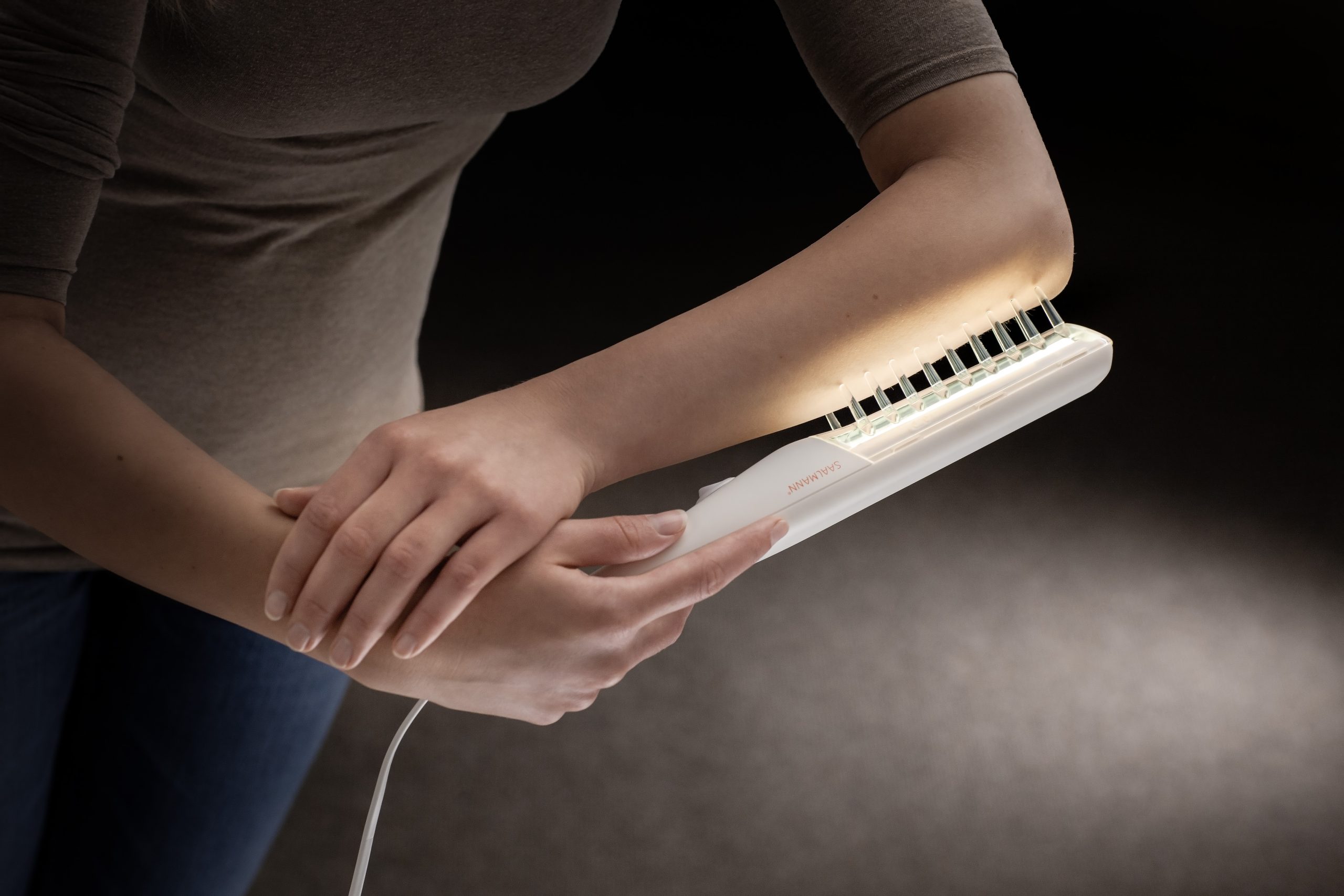Psoriasis is a chronic autoimmune condition that leads to the rapid growth of skin cells, resulting in scaling on the skin’s surface. This condition can be physically painful and emotionally distressing, often leading to significant physical discomfort and reduced quality of life. One of the treatments that have gained prominence in managing psoriasis symptoms is Ultraviolet B (UVB) phototherapy. This document will explore the mechanisms, effectiveness, advantages, and potential risks associated with UVB therapy for psoriasis.
What is UVB Phototherapy?
UVB phototherapy involves exposing the skin to UVB radiation, specifically within the wavelength range of 280 to 320 nanometers. Unlike other forms of ultraviolet light, such as UVA rays, UVB rays are more effective in treating skin ailments like psoriasis due to their ability to penetrate the skin more directly. Treatments can be administered either through a specialized light box in a clinical setting or via handheld devices for home use, depending on the severity of the condition and the treatment plan prescribed by a dermatologist.
Mechanism of Action
The therapeutic effects of UVB therapy in psoriasis primarily stem from its ability to reduce skin cell proliferation and induce apoptosis (programmed cell death) in rapidly dividing cells. By modulating the immune response within the skin, UVB treatment helps to alleviate the inflammatory process that is characteristic of psoriasis. Additionally, UVB exposure can enhance the skin’s natural barrier function and promote the healing of lesions, leading to a significant reduction in scaling and irritation.
Efficacy of UVB Therapy
Numerous studies have demonstrated the effectiveness of UVB therapy in treating psoriasis, particularly in moderate to severe cases. In general, patients receiving UVB phototherapy experience substantial improvement in their symptoms, with many reporting up to 75% clearance of psoriatic plaques after a full course of treatment. The typical treatment regimen involves sessions two to three times a week over several weeks, depending on the individual’s response and skin type.
Advantages of UVB Therapy
- Non-Invasive Treatment: UVB therapy is a non-invasive treatment option, making it a preferred choice for patients seeking alternatives to systemic therapies, which may have more extensive side effects.
- Short Treatment Duration: Many patients achieve significant improvement in a relatively short timeframe, leading to quicker results compared to some topicals or systemic medications.
- Reduced Side Effects: Compared to systemic treatments that may involve immunosuppressive medications, UVB therapy generally has fewer systemic side effects, primarily limited to localized reactions.
- Enhanced Quality of Life: With a potential decrease in skin lesions, many patients experience an improvement in their overall self-esteem and quality of life.
Risks and Side Effects
While UVB therapy is generally considered safe, it is not without risks. Potential side effects include:
- Erythema: Mild redness or sunburn-like reactions can occur, particularly after the first few sessions.
- Itching or Dryness: Some patients may experience increased dryness of the skin, necessitating the use of moisturizers.
- Long-term Risks: Repeated and prolonged exposure to UVB radiation may increase the risk of skin cancer over time, although this risk is significantly lower than that associated with other therapies.
Who is a Candidate for UVB Therapy?
Not all patients with psoriasis are suitable candidates for UVB therapy. Ideal candidates typically include those with:
- Moderate to Severe Psoriasis: Patients with extensive or resistant psoriatic lesions often benefit the most from UVB treatments.
- History of Minimal Response to Topical Treatments: Individuals who have not responded well to topical corticosteroids or vitamin D analogs may consider UVB therapy.
- Psychological Impact of Psoriasis: Those whose quality of life is significantly impacted by psoriasis may be more inclined to pursue phototherapy options.
Combining UVB Therapy with Other Treatments
In cases of psoriasis that do not respond adequately to UVB therapy alone, dermatologists may recommend a combination approach. This might include the use of topical treatments, systemic medications, or biologic therapies alongside UVB treatments to enhance overall effectiveness. Such combination therapies can lead to more pronounced improvements and longer remission periods.
Conclusion
UVB phototherapy stands as a significant treatment option for individuals dealing with the debilitating effects of psoriasis. With its ability to effectively manage symptoms and improve skin health, UVB therapy offers patients a focused approach to reclaiming their quality of life. As with any medical treatment, it is essential for individuals to consult their healthcare provider to determine the most appropriate and personalized treatment plan for their specific condition. Through careful management and adherence to treatment regimens, patients can achieve better control over their psoriasis, ultimately improving their skin condition and overall well-being.

